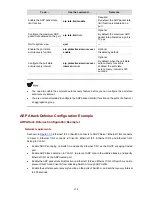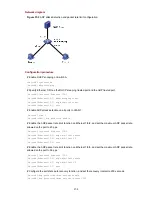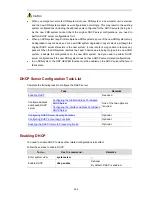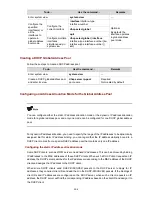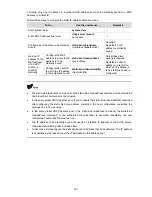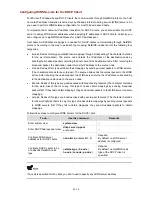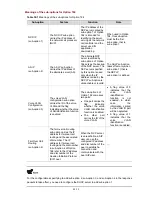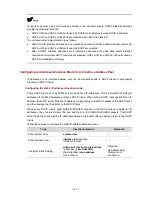
39-6
To do…
Use the command…
Remarks
Enter system view
system-view
—
interface
interface-type
interface-number
dhcp select
global
Configure the
current interface
quit
Configure the
specified
interface(s) or
all the
interfaces to
operate in
global address
pool mode
Configure multiple
interfaces
simultaneously in
system view
dhcp select
global
{
interface
interface-type interface-number
[
to
interface-type interface-number
] |
all
}
Optional
By default, the
interface operates
in global address
pool mode.
Creating a DHCP Global Address Pool
Follow these steps to create a DHCP address pool:
To do…
Use the command…
Remarks
Enter system view
system-view
—
Create a DHCP global address pool
and enter its view
dhcp server ip-pool
pool-name
Required
Not created by default.
Configuring an Address Allocation Mode for the Global Address Pool
You can configure either the static IP address allocation mode or the dynamic IP address allocation
mode for a global address pool, and only one mode can be configured for one DHCP global address
pool.
For dynamic IP address allocation, you need to specify the range of the IP addresses to be dynamically
assigned. But for static IP address binding, you can regard that the IP address statically bound to a
DHCP client comes from a special DHCP address pool that contains only one IP address.
Configuring the static IP address allocation mode
Some DHCP clients, such as WWW servers, need fixed IP addresses. This can be achieved by binding
IP addresses to the MAC addresses of these DHCP clients. When such a DHCP client requests an IP
address, the DHCP server searches for the IP address corresponding to the MAC address of the DHCP
client and assigns the IP address to the DHCP client.
When some DHCP clients send DHCP-DISCOVER packets to the DHCP server to apply for IP
addresses, they construct client IDs and add them in the DHCP-DISCOVER packets. If the bindings of
client IDs and IP addresses are configured on the DHCP server, when such a client requests an IP
address, the DHCP server will find the corresponding IP address based on the client ID and assign it to
the DHCP client.

